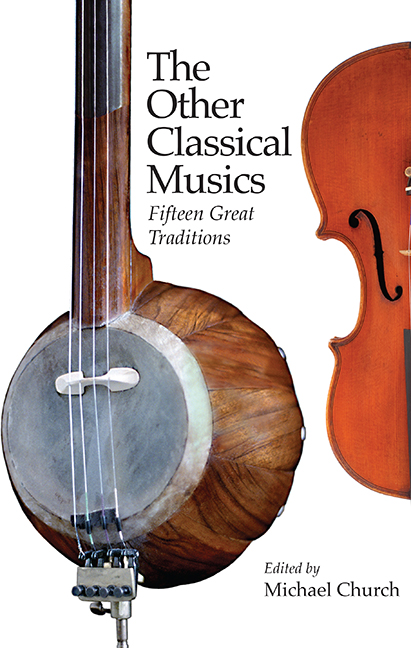65 results
Granular dilatancy and non-local fluidity of partially molten rock
-
- Journal:
- Journal of Fluid Mechanics / Volume 978 / 10 January 2024
- Published online by Cambridge University Press:
- 27 December 2023, A7
-
- Article
-
- You have access
- Open access
- HTML
- Export citation
Ascent rates of 3-D fractures driven by a finite batch of buoyant fluid
-
- Journal:
- Journal of Fluid Mechanics / Volume 954 / 10 January 2023
- Published online by Cambridge University Press:
- 29 December 2022, A12
-
- Article
-
- You have access
- Open access
- HTML
- Export citation
Basal hydrofractures near sticky patches
-
- Journal:
- Journal of Glaciology / Volume 69 / Issue 275 / June 2023
- Published online by Cambridge University Press:
- 21 September 2022, pp. 475-486
-
- Article
-
- You have access
- Open access
- HTML
- Export citation
Antimicrobial efficacy and durability of copper formulations over one year of hospital use
-
- Journal:
- Infection Control & Hospital Epidemiology / Volume 43 / Issue 1 / January 2022
- Published online by Cambridge University Press:
- 15 March 2021, pp. 79-87
- Print publication:
- January 2022
-
- Article
- Export citation
Visual memory tests enhance the identification of amnestic MCI cases at greater risk of Alzheimer’s disease
-
- Journal:
- International Psychogeriatrics / Volume 31 / Issue 7 / July 2019
- Published online by Cambridge University Press:
- 25 October 2018, pp. 997-1006
-
- Article
- Export citation
Reaction-infiltration instability in a compacting porous medium
-
- Journal:
- Journal of Fluid Mechanics / Volume 852 / 10 October 2018
- Published online by Cambridge University Press:
- 02 August 2018, pp. 5-36
-
- Article
- Export citation
Identification of Heterogeneous Cognitive Subgroups in Community-Dwelling Older Adults: A Latent Class Analysis of the Einstein Aging Study
-
- Journal:
- Journal of the International Neuropsychological Society / Volume 24 / Issue 5 / May 2018
- Published online by Cambridge University Press:
- 10 January 2018, pp. 511-523
-
- Article
- Export citation
Consequences of viscous anisotropy in a deforming, two-phase aggregate. Why is porosity-band angle lowered by viscous anisotropy?
-
- Journal:
- Journal of Fluid Mechanics / Volume 784 / 10 December 2015
- Published online by Cambridge University Press:
- 03 November 2015, pp. 199-224
-
- Article
- Export citation
Frontmatter
-
- Book:
- The Other Classical Musics
- Published by:
- Boydell & Brewer
- Published online:
- 29 May 2021
- Print publication:
- 16 October 2015, pp i-iv
-
- Chapter
- Export citation
Contents
-
- Book:
- The Other Classical Musics
- Published by:
- Boydell & Brewer
- Published online:
- 29 May 2021
- Print publication:
- 16 October 2015, pp vi-vii
-
- Chapter
- Export citation
List of Illustrations
-
- Book:
- The Other Classical Musics
- Published by:
- Boydell & Brewer
- Published online:
- 29 May 2021
- Print publication:
- 16 October 2015, pp viii-xv
-
- Chapter
- Export citation
Dedication
-
- Book:
- The Other Classical Musics
- Published by:
- Boydell & Brewer
- Published online:
- 29 May 2021
- Print publication:
- 16 October 2015, pp v-v
-
- Chapter
- Export citation
Bibliographies
-
- Book:
- The Other Classical Musics
- Published by:
- Boydell & Brewer
- Published online:
- 29 May 2021
- Print publication:
- 16 October 2015, pp 370-386
-
- Chapter
- Export citation
Preface and Acknowledgements
-
- Book:
- The Other Classical Musics
- Published by:
- Boydell & Brewer
- Published online:
- 29 May 2021
- Print publication:
- 16 October 2015, pp xix-xxii
-
- Chapter
- Export citation
Index
-
- Book:
- The Other Classical Musics
- Published by:
- Boydell & Brewer
- Published online:
- 29 May 2021
- Print publication:
- 16 October 2015, pp 387-404
-
- Chapter
- Export citation
List of Contributors
-
- Book:
- The Other Classical Musics
- Published by:
- Boydell & Brewer
- Published online:
- 29 May 2021
- Print publication:
- 16 October 2015, pp xvi-xviii
-
- Chapter
- Export citation
Notes
-
- Book:
- The Other Classical Musics
- Published by:
- Boydell & Brewer
- Published online:
- 29 May 2021
- Print publication:
- 16 October 2015, pp 361-369
-
- Chapter
- Export citation

The Other Classical Musics
- Fifteen Great Traditions
-
- Published by:
- Boydell & Brewer
- Published online:
- 29 May 2021
- Print publication:
- 16 October 2015
Maps
-
- Book:
- The Other Classical Musics
- Published by:
- Boydell & Brewer
- Published online:
- 29 May 2021
- Print publication:
- 16 October 2015, pp 24-24
-
- Chapter
- Export citation
MRS Communications, Polymers and Soft Matter special issue, Part A The functionality of polymers: fundamentals to technology
- Part of
-
- Journal:
- MRS Communications / Volume 5 / Issue 2 / June 2015
- Published online by Cambridge University Press:
- 13 July 2015, p. 95
- Print publication:
- June 2015
-
- Article
- Export citation






